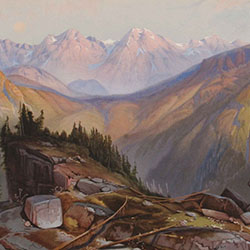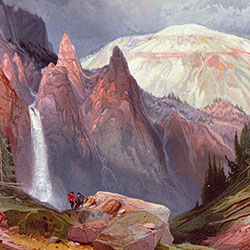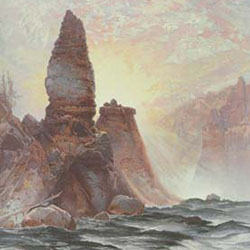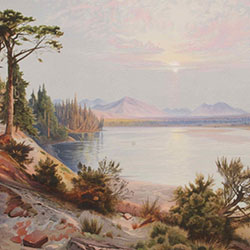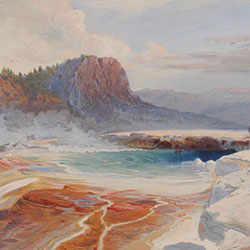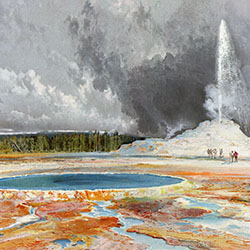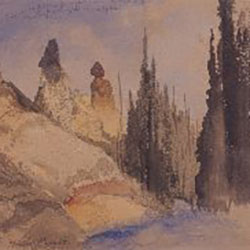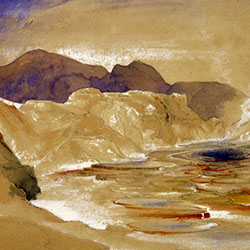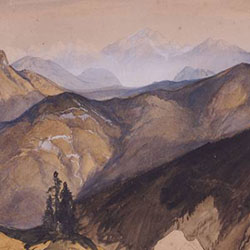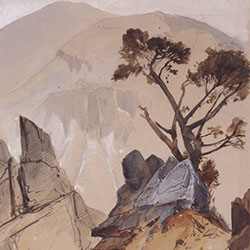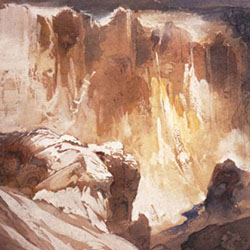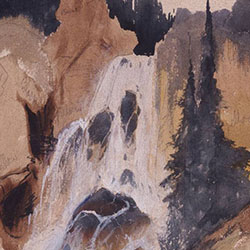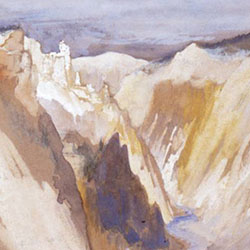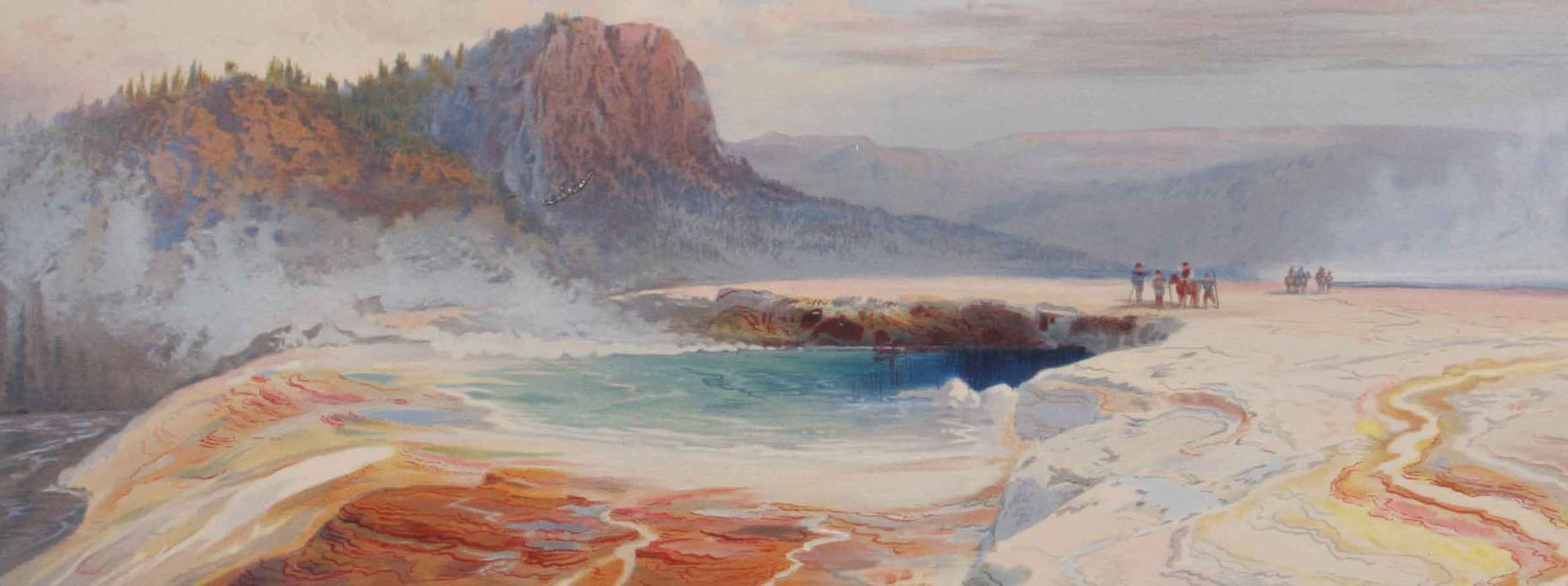
Painter of Yellowstone
Thomas Moran’s vision of the Western landscape was critical to the establishment of Yellowstone National Park in 1872. His pencil and watercolor field sketches and paintings from the Hayden expedition in 1871 captured the grandeur and documented the natural features of the Yellowstone region.
Moran started working with Scribner’s Monthly in 1870 and embarked on a career as an illustrator. His interest in the Yellowstone area was first piqued when he illustrated a magazine article titled, "The Wonders of the Yellowstone." Moran had accepted the assignment without having seen the area firsthand. After rendering geothermal features and other natural phenomena using someone else's amateurish sketches and notes, Moran found a way to travel to the region. He joined the Hayden Geological Survey of 1871 that explored the area that would become Yellowstone National Park.
On expedition, the landscape painter worked closely with survey photographer William Henry Jackson (1843 - 1942). The two followed the survey’s general itinerary but lingered at sites of particular interest to them — such as Tower Creek and the Grand Canyon of the Yellowstone.
Read MoreMoran’s sketches of Gardiner River, Mammoth Hot Springs, Liberty Cap, Tower Fall and the Grand Canyon of the Yellowstone captured the dramatic and colorful landscape. The party visited geyser basins and traveled through Mirror Plateau in the northeast corner of the future park. They returned to the Yellowstone River and followed the waterway out of what would become part of the park. Jackson and Moran used numerous vantage points along the Canyon rim.
With a portfolio of sketches and watercolors, and his rations down to only biscuits, Moran proceeded home to translate his artwork into finished paintings. In 1872, he completed a 7 by 12 foot oil painting, Grand Canyon of the Yellowstone that was displayed in Congress.
This monumental work, together with Jackson's photographs, was essential to the creation of Yellowstone National Park in 1872. Doubts about the wonders of the Yellowstone region vanished and Corps of Engineers Captain Hiram M. Chittenden wrote that Moran's paintings and Jackson's remarkable photographs "did a work which no other agency could do and doubtless convinced everyone who saw them that the regions where such wonders existed should be preserved to the people forever." Jackson wrote that the watercolors and photographs made during the survey "were the most important exhibits brought before the [Congressional] Committee." The "wonderful coloring" of Moran's sketches, he wrote, made all the difference.
Friends began to call the artist "Tom 'Yellowstone' Moran," and Moran incorporated a "Y" into his initials when signing his works. Although Moran painted many other areas that later become national parks or monuments, Yellowstone, the artist said, was "his love." Yellowstone National Park will be forever intertwined with the man who first painted the area over 125 years ago.

